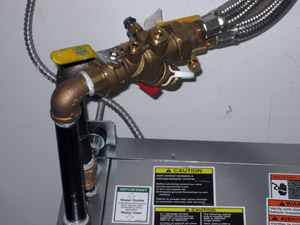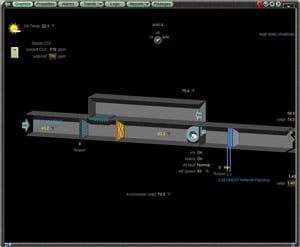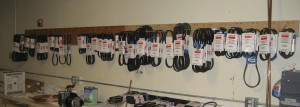Everyone is talking about building retrocommissioning – they just don’t know it. Retrocommissioning is the art of analyzing a building’s current performance and implementing measures to reduce the operating cost while improving the functionality of the building’s systems. (Commissioning is the term used to describe this process when it is applied to new buildings, so ‘retro-commissioning’ evolved as the term for when the building has been around a while.)
Building retrocommissioning includes engineering analyses designed to increase efficiency, lower operating cost, improve occupant comfort and decrease maintenance costs.
Retrocommissioning spans the spectrum from tweaking controls of the HVAC and lighting systems to physically analyzing the functionality of the mechanical systems. (Are the valves and dampers working? Are the systems piped correctly?). In the end, the building operates more smoothly, occupants are more comfortable, equipment maintenance problems are reduced and the building owner saves money.

A photo of a strainer installed upside down and backwards. Contractor told the owner he was “all set”.
Building owners, facility managers and businesses
Building owners, facility managers and businesses are interested in retrocommissioing because energy savings go directly towards the bottom line — reducing the cost of doing business. It makes you more competitive, allows you to invest in the business, increases your profit margin and offers protection from energy price fluctuations. It’s an exceptionally safe method of improving your business because it makes the company stronger from within, less dependent on outside influence.
Why are people talking?
People are talking about building retrocommissioning because the savings are potentially phenomenal. Existing buildings that haven’t been looked at for 5 years typically have “low-hanging fruit” that can easily save 5% on energy bills without a large investment. There is, for example, usually great potential for simply turning the lighting and HVAC controls down automatically when the building is unoccupied — for office buildings that can be as much as 70% of the year!
And that’s just the utility bill. Building retrocommissioning also reduces maintenance problems and occupant comfort complaints. A true retrocommissioning job includes a detailed analysis of the functionality of the HVAC system. Chillers, boilers, and air handling units typically get tweaked or retrofitted over the years to solve perceived problems but often times the “solutions” are Band-Aids — not true solutions to the problems. When the building needs change, systems are renovated accordingly, often without a big-picture view of how one renovation affects other, existing spaces. Over time, this leads to a system that does not perform as desired — leaving building occupants complaining and unproductive, maintenance people overworked and maintenance costs higher than necessary. These costs are avoidable by having an engineer analyze the systems and current building needs on a comprehensive level.

a CO2 setpoint of 750 PPM — energy HOG! This unit serves an office space which should be set to 930 PPM (under the ventilation code to which it was built). That's roughly 50% more OA CFM than necessary resulting in conditioning more OA than necessary. A perfect example of the proverbial "screwdriver fix".
Realized savings
We regularly see savings for building owners of 18-27% from our retrocommissioning jobs. (This is for a complete building retrocommissioning job with a detailed analysis of the mechanical and lighting systems.) In addition to a financial return, retrocommissioning educates the building owner, facilities and maintenance staff on their mechanical and electrical systems so that they can operate and maintain their systems more efficiently.
As an owner, you expect a smooth performing building. Our economy and our business community need energy efficient buildings. Building retrocommissioning is a proven vehicle to achieve these expectations — so let’s all keep talking about it.
Related articles
- DOE Software Models Good Building Behavior (earthtechling.com)
- Retrocommissioning Energy Star Buildings, EPA



